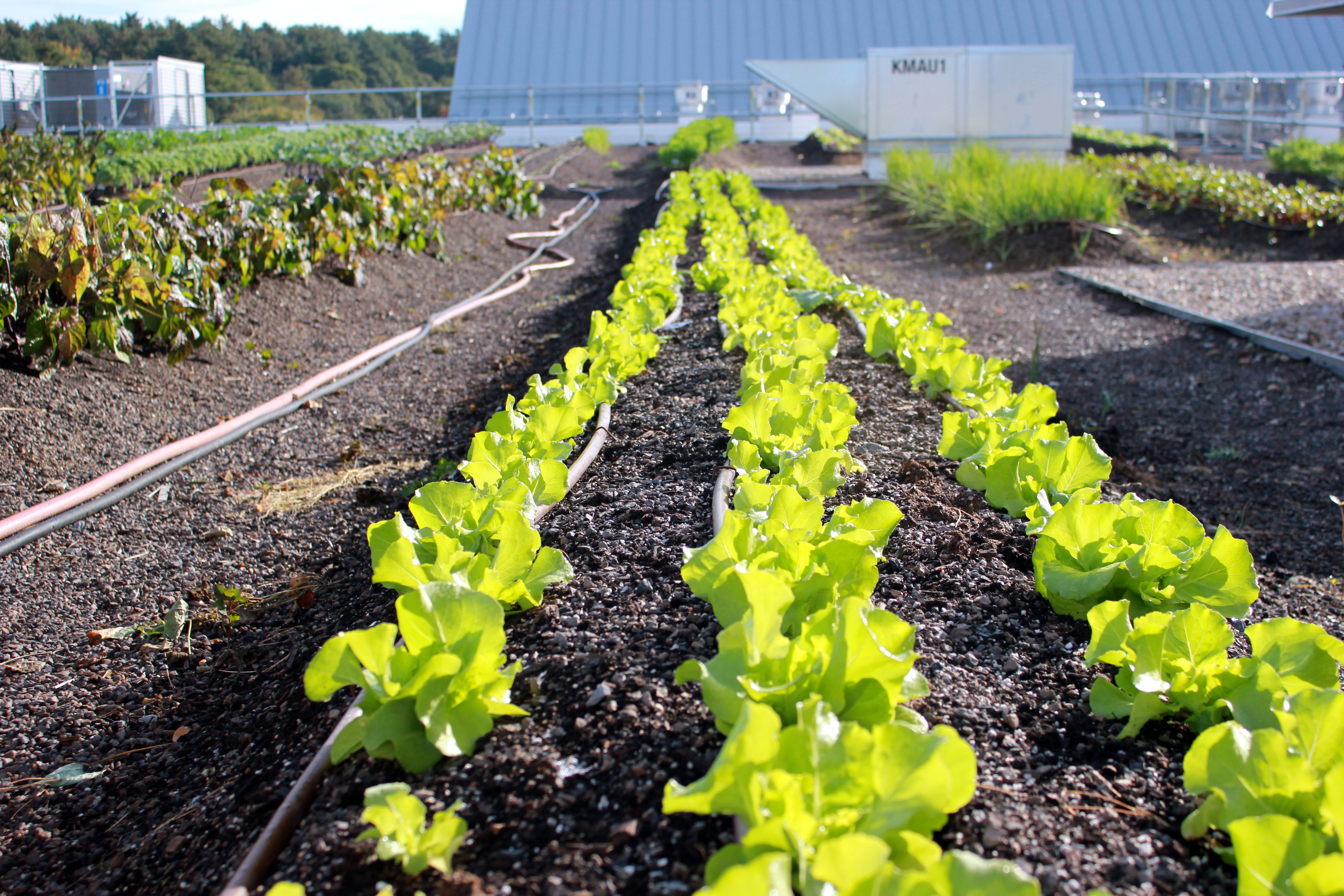
The rewards of growing fresh vegetables and fruit on your residential or commercial property are unlimited! Planting, caring for, and harvesting an intensive, organic urban farm is not without its series of challenges. Learning about the process, active engagement, and setting clear expectations, however, will make these challenges worthwhile, educational opportunities.
Urban farming can be easy but requires a more complex approach than “stick it in the ground and it grows.” But this inherent complexity, especially when approaching your farming plans with a holistic, ecosystem focused strategy, is what horticulturists and hobbyists live for. And, of course, enjoying your garden’s nutritious bounty!
At Green City Growers, we try to maximize the possibility of success long before planting. There are several key factors that our expert farmers must take into consideration when choosing site location and which crops will offer the best shot at a healthy yield. There are also factors out of the farmer’s control. Knowing this information will set realistic goals and expectations and make for a much more enjoyable experience.
SEASONALITY
Some crops are highly seasonal and just won’t produce as well, or at all, during certain times of the year. For example some crops such as cilantro and sugar snap peas tend to do better in the cooler seasons while tomatoes thrive in the summer heat.
SPACING
Certain crops need more space than others to thrive. For example, zucchini can take up a whole 4x4 raised bed while a pepper plant may only take up 1 square foot. Remember, if you plant vegetables that require more room, you will be sacrificing yield of the whole crop.
SUNLIGHT
Lighting is one of the most important elements in growing vegetables and is probably the one we have least control over. Some leaf and root vegetables such as carrots, Swiss chard, and kale are able to tolerate some shade while many others require an average of six hours of daylight to thrive. Sunlight is also highly dependent on the season too, with the arc of the sun and foliage on the trees both affecting how much exposure your urban farm will get
WATER
Too little water will not let plant roots grow deep and strong enough to gather nutrients for good growth. Too much water will saturate the soil, not allowing the plant air and space needed to grow. Vegetables generally need to be watered twice a week before 11 AM or after 4 PM. We have found that a drip line system on a timer ensures the correct amount of irrigation.
SOIL QUALITY
Unfortunately, our industrial past in Boston has resulted in soil that is too highly contaminated with lead in many locations for safe consumption of what we grow in it. We use a special soil mix, which is a nutrient-dense mixture of compost, topsoil, and special amendments that assist in proper drainage and the overall health of the plants. From time to time it is necessary to refresh your farm’s soil and add further nutrients to maximize output and nutrition.
ROOTS
Unfortunately, unruly roots are a fact of life for ground-level urban farms - ever seen tree roots pushing up Boston's brick sidewalks? Every few years your farm will likely experience a take-over of roots, which have come through the bottom of the raised beds and compromise the health and yield of your harvest. We use a special weedblock fabric that prevents weeds from penetrating into your raised beds and generally keeps tree roots at bay for as long as possible. Every few years, your farm may need a complete root service requiring the removal of all soil and cutting down these roots to benign lengths. You farm will not thrive without it. Unruly roots do not apply to rooftop farms.
LARGE PESTS
Deer, chipmunk, and rabbits are just as excited about fresh produce as you are and their presence is another fact of life for urban farmers too. There is nothing worse than coming out to harvest strawberries to see that they’re all gone! At GCG we offer easy access pest fencing. It’s made with a three quarter inch mesh that is impossible to chew through but still allows access to beneficial creatures such as bees and butterflies.
SMALL PESTS & DISEASES
The life cycle of a pest or disease is powerful knowledge for an urban farmer. Knowing this can help you make decisions on what action is most effective. By knowing the times of year that pests are most prevalent and their basic stages of development, you gain the tools to minimize them at any point in their life cycle. When plants have their basic needs met (light, nutrients, water, air), they are less vulnerable to disease. Other diseases such as blight, are more difficult to prevent. An organic approach, which looks at the whole plant system – the leaves, fruit, roots, soil, air, light – in its surrounding environment, is the best approach.
The low arc of the sun in New England, and the shade cast by foliage on trees and nearby buildings, may make finding enough sun exposure for your urban farm the toughest hurdle. You may need to consider taking your plants to the rooftop! For a full evaluation of sun exposure and more at any location your are thinking of growing vegetables, submit a request for a site visit by one of our experienced urban farm designers.